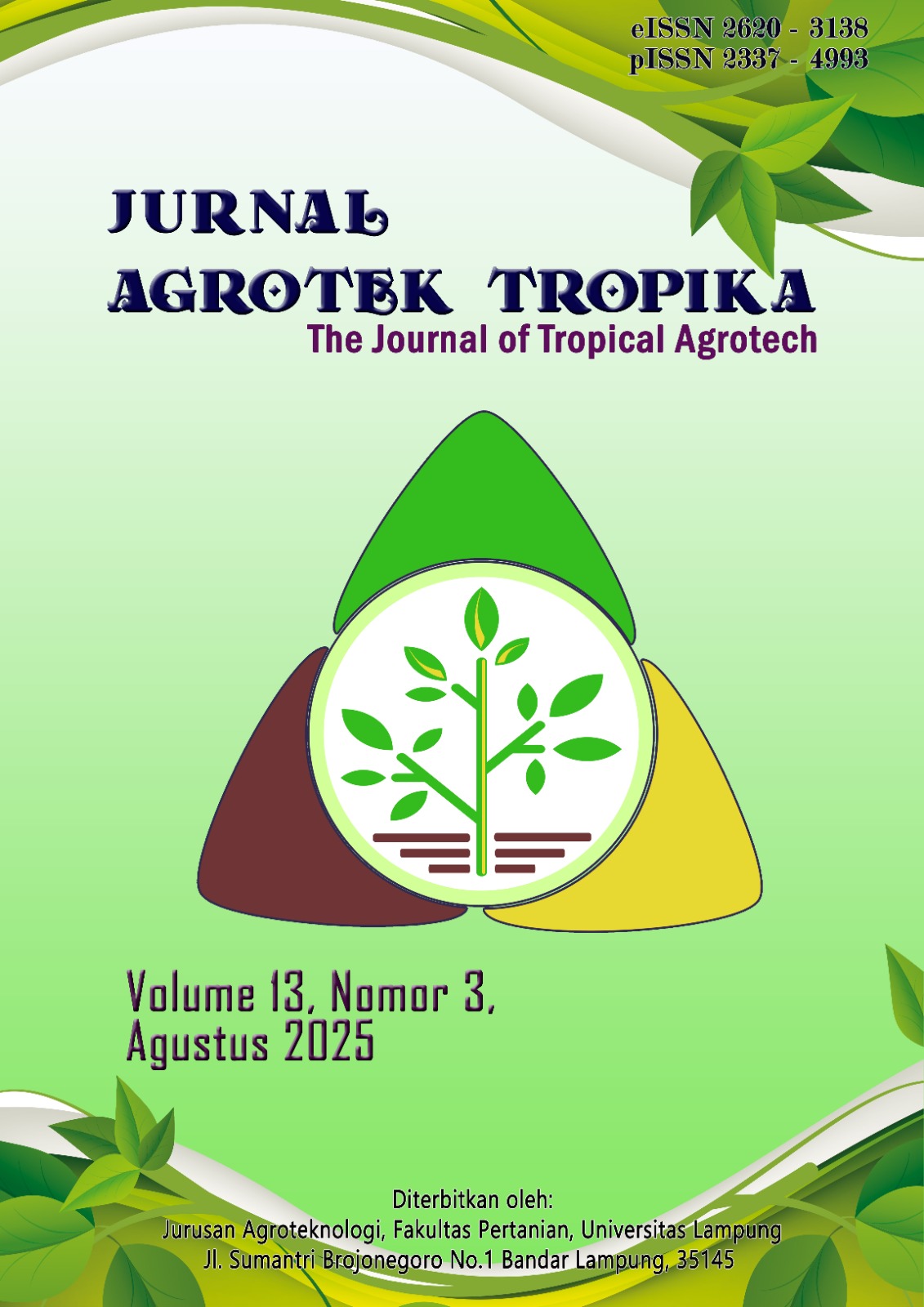MORPHOLOGY, CHARACTERISTIC AND SOIL CLASSIFICATION OF PADDY FIELD IN THE PINOGU PLATEAU, BONE BOLANGO REGENCY
DOI:
https://doi.org/10.23960/jat.v13i3.8396 Abstract View: 120
Abstract View: 120
Keywords:
Morphology, characteristic, classification, soil, paddyAbstract
Paddy fields are the main source of rice production in Pinogu District, thus supporting food security in this district, but have not been managed based on the soil properties. The diversity of morphology, characteristics, and soil classification on the Pinogu Plateau is the aim of this research. Three pedon paddy fields (IY1, IY2, and IY3) in one topososequence had their profiles described using a soil survey method at a scale of 1:5,000, including matrix color, structure, and soil consistency. Soil samples were taken from each horizon in each profile and analyzed in the laboratory for: texture (sand, clay, silt), bulk density, porosity, pH, C-organic, cation exchange capacity, base saturation, and salinity. Next, soil pedons were classified using a soil taxonomy system starting from Order level to Family level. The research results showed that the paddy fields on the Pinogu plateau had developed with the presence of horizon structuring (Ap-Bt) on the topososequences, but the paddy fields on the upper and middle slopes were more developed than the paddy fields on the lower slopes. The Pinogu Plateau was included in the isohyperthermic of soil temperature regimes and the udic of soil moisture regimes. The paddy field on the upper slopes was classified as Typic Humudepts, rather fine, active, isohyperthermic., meanwhile the paddy field on the middle slope was classified as Fluventic Humudepts, rather fine, active, isohyperthermic., and the paddy field on the lower slopes was classified as Entic Humudepts, rather fine , super active, isohyperthermic. This classification of paddy fields has implications for specific instructions for soil management, so that management of paddy fields that is in accordance with the characteristics and type of soil will increase the productivity of paddy fields in the future.Downloads
Downloads
Published
How to Cite
Issue
Section
License
Copyright (c) 2025 Nurdin Nurdin, Ismail Yusuf, Muhammad Arief Azis, Rival Rahman

This work is licensed under a Creative Commons Attribution 4.0 International License.
Jurnal Agrotek Tropika (JAT) is licensed under a Creative Commons Attribution 4.0 International License.
The copyright holder is the author. Authors publishing under any license allowed by the journal retain the copyright and full publishing rights without restrictions.
The Creative Commons Attribution 4.0 International (CC BY 4.0) license allows users to copy, distribute, and adapt the work, even for commercial purposes, as long as proper attribution is given to the original creator. This is a highly flexible license that encourages widespread dissemination and use of creative works, supporting innovation and collaboration across various fields.











